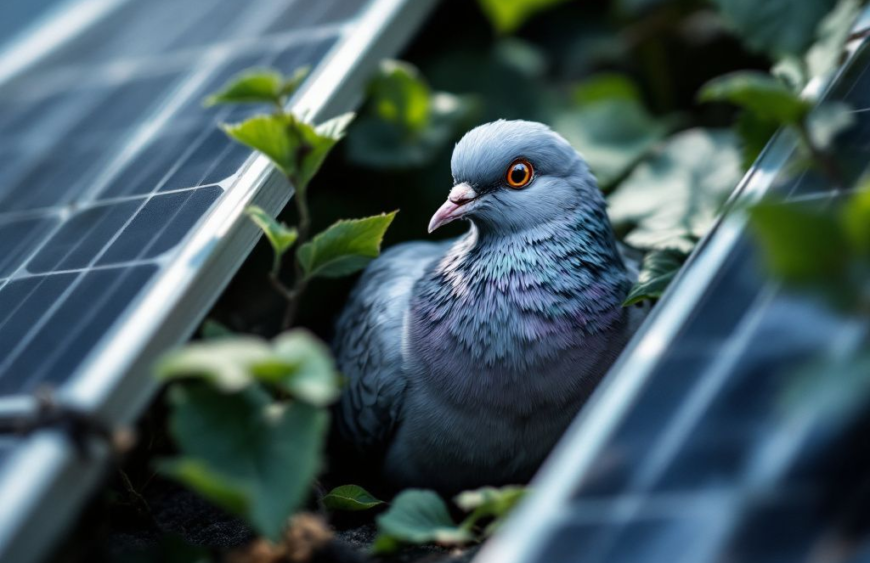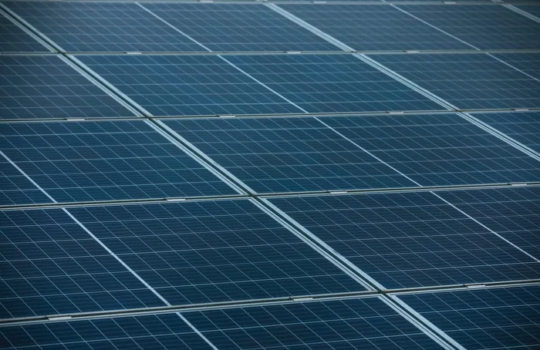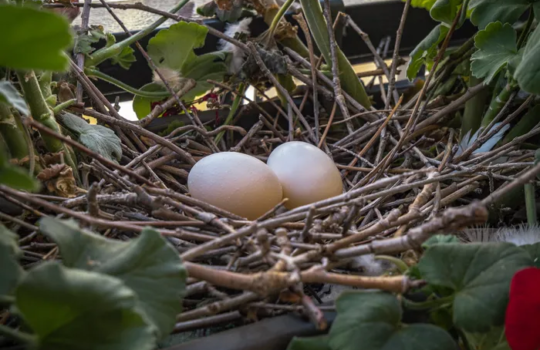How to Pigeon-Proof Your Solar Panels: Effective Strategies for Maximum Efficiency
Are your solar panels under siege from feathered invaders? Pigeons, while iconic in urban landscapes, can wreak havoc on your solar energy systems, obstructing sunlight and affecting efficiency. If you’ve noticed a decline in your solar output or find yourself cleaning up after these persistent birds, it’s time to take action. Pigeon-proofing your solar panels not only safeguards your investment but also maximizes their performance. In this article, we’ll explore effective strategies to deter these unwelcome guests—from physical barriers to natural repellents—that protect your panels and boost your energy production. Say goodbye to the mess and hello to enhanced efficiency, all while ensuring your solar panels continue to work at peak performance. Let’s dive into the best ways to keep those pigeons at bay and preserve the power of the sun!
Understanding the Problem: Why Pigeons are Attracted to Solar Panels
Pigeons have become a widespread issue for solar panel owners, particularly in urban areas. These birds are naturally inclined to roost on rooftops, and solar panels provide an ideal environment for them. The panels offer shelter from predators and the elements, creating a safe and warm spot for nesting. Additionally, the elevated position of solar panels gives pigeons a broad view of their surroundings, which is a desirable trait for these naturally cautious birds.
The underbelly of solar panels is especially appealing to pigeons. The gap between the panels and the roof creates a perfect nesting site that is both secure and secluded. This space is often warm due to the heat generated by the panels, making it even more attractive for pigeons looking for a cozy nesting spot. Moreover, the materials used in solar panels can sometimes offer easy access for pigeons to peck at, which can lead to further damage.
Another factor contributing to the attraction is the abundance of food sources in urban areas. Pigeons are scavengers and can find food almost anywhere. The proximity of food sources to the safe nesting spots under your solar panels means that these birds have little reason to leave once they’ve established themselves. Understanding these motivations is the first step in developing effective strategies to pigeon-proof your solar panels.
The Impact of Pigeons on Solar Panel Efficiency
The presence of pigeons can significantly affect the efficiency of your solar panels. When pigeons nest under the panels, their droppings accumulate on the surface of the panels. This layer of grime obstructs sunlight, reducing the panels’ ability to generate electricity. Even a small amount of debris can lead to noticeable decreases in energy output, making it crucial to keep the panels clean and clear of pigeon waste.
Moreover, the nesting materials and debris that pigeons bring can cause physical damage to your solar panels. Twigs, leaves, and other nesting materials can get caught in the wiring or even block the airflow needed to cool the panels, potentially leading to overheating and reduced efficiency. The weight of the nests can also put undue stress on the panels and their mounting structures, leading to long-term damage.
In addition to physical damage and efficiency loss, the presence of pigeons can lead to increased maintenance costs. Regular cleaning and repairs become necessary to ensure the panels operate at their full potential. These additional expenses can add up over time, negating the cost-saving benefits of solar energy. Therefore, addressing the pigeon problem is not just about maintaining efficiency but also about protecting your investment in renewable energy.
Signs Your Solar Panels are Infested with Pigeons
Identifying a pigeon infestation early can prevent extensive damage and maintain the efficiency of your solar panels. One of the most obvious signs is the presence of pigeons themselves. If you frequently see pigeons roosting near your panels or hear cooing sounds, it’s a clear indication that they have taken up residence. Pigeons are creatures of habit, so their regular presence is a strong signal that they are nesting nearby.
Another sign is the accumulation of bird droppings on and around your solar panels. Pigeon droppings are acidic and can corrode the surface of the panels over time, leading to permanent damage. If you notice an unusual amount of droppings, it’s a sign that pigeons are living in close proximity. Additionally, you might find nesting materials such as twigs, leaves, and feathers accumulating around the edges of your panels.
Lastly, a decrease in your solar panel efficiency can also indicate a pigeon problem. If you notice a sudden drop in energy output, it’s worth inspecting your panels for signs of pigeon activity. The combination of physical obstacles, such as nests and droppings, can severely impact the panels’ ability to absorb sunlight, leading to reduced performance. Identifying these signs early can help you take swift action to mitigate the problem.
Effective Strategies for Pigeon-Proofing Your Solar Panels
There are several effective strategies to pigeon-proof your solar panels, ensuring long-term efficiency and protection of your investment. The first step is to create physical barriers that prevent pigeons from accessing the area under the panels. Netting, screens, and mesh can be installed around the edges of the panels to block entry points. These barriers should be made of durable materials that can withstand weather conditions and the persistence of pigeons.
Another approach is to use deterrents that make the area less appealing to pigeons. Various products are available that emit sounds, scents, or visual stimuli that pigeons find unpleasant. Ultrasonic devices can emit high-frequency sounds that are inaudible to humans but irritating to birds. Similarly, reflective surfaces or predator decoys can be used to scare pigeons away. These deterrents should be strategically placed around the solar panels to maximize their effectiveness.
A combination of physical barriers and deterrents often yields the best results. While barriers keep pigeons from nesting under the panels, deterrents can prevent them from roosting nearby. Regular maintenance and inspection are also crucial to ensure these measures remain effective. By adopting a comprehensive approach, you can successfully protect your solar panels from pigeon infestations and maintain their efficiency.






